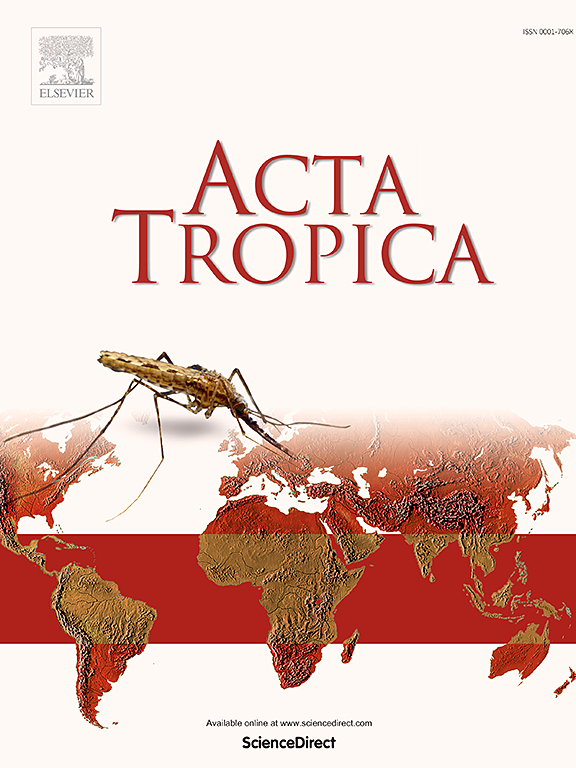Metabolomic analysis of larval stages of Onchocerca japonica (Spirurida: Onchocercidae), raised in black fly (Diptera: Simuliidae) vectors, by gas chromatography-tandem mass spectrometry
IF 2.1
3区 医学
Q2 PARASITOLOGY
引用次数: 0
Abstract
To monitor and prevent the spread of zoonotic onchocerciasis, identification of the natural vectors (blood-sucking insects) of its causative agents, Onchocerca species, is crucial. To date, vector identification depends on the detection of infective third-stage larvae in insects by traditional dissection. We aimed to develop a novel, more efficient method for the discrimination of the four larval stages, i.e. microfilariae (Mf), first-stage larvae (L1), second-stage larvae (L2), and third-stage larvae (L3), of O. japonica by metabolomic analysis. Microfilariae of O. japonica, the causative agent of zoonotic onchocerciasis in Japan, were obtained from skin snips of wild boars and injected into newly-emerged black flies (Diptera: Simuliidae) to enable further larval development. Metabolites obtained from Mf, L1, L2, and L3 were analyzed using a gas chromatography-tandem mass spectrometer. Multivariate analysis of the data of metabolites showed the complete separation of the four larval stages. The highest level of acetoacetic acid and hydroxylamine was found in Mf and L3, respectively. Consequently, we propose that hydroxylamine is a potential marker to detect infective larvae of O. japonica in natural infections and could be a valuable tool in vector surveys, transmission studies and epidemiological surveys.

利用气相色谱-串联质谱法对在黑蝇(双翅目:蚋科)载体中饲养的日本盘尾丝虫(螺旋体:盘尾丝虫科)幼虫阶段进行代谢组学分析。
本文章由计算机程序翻译,如有差异,请以英文原文为准。
求助全文
约1分钟内获得全文
求助全文
来源期刊

Acta tropica
医学-寄生虫学
CiteScore
5.40
自引率
11.10%
发文量
383
审稿时长
37 days
期刊介绍:
Acta Tropica, is an international journal on infectious diseases that covers public health sciences and biomedical research with particular emphasis on topics relevant to human and animal health in the tropics and the subtropics.
 求助内容:
求助内容: 应助结果提醒方式:
应助结果提醒方式:


